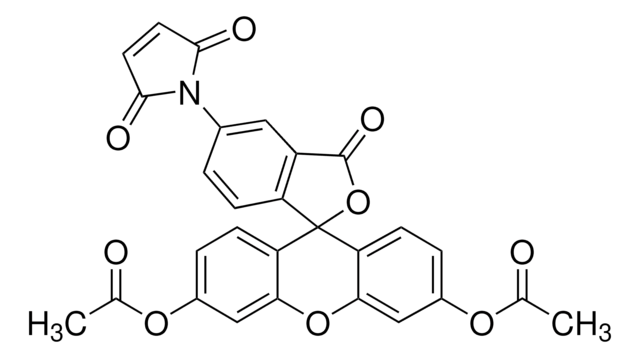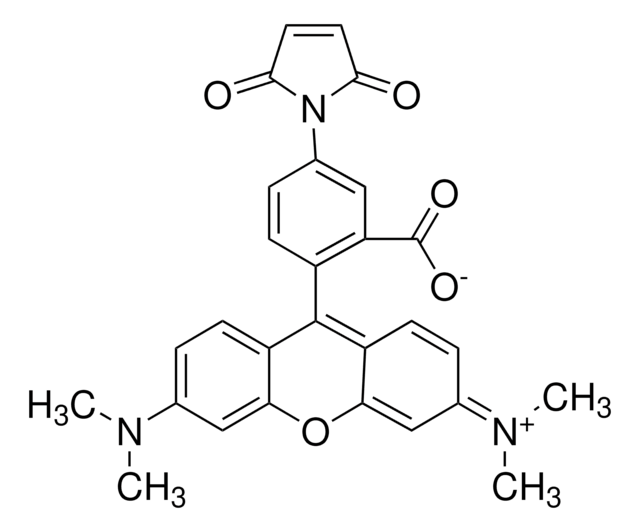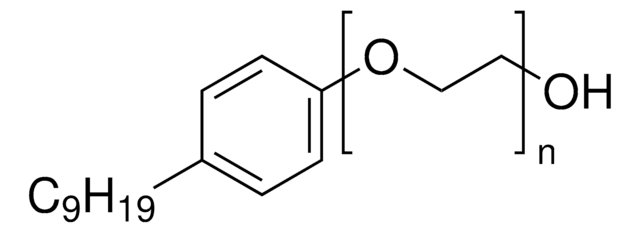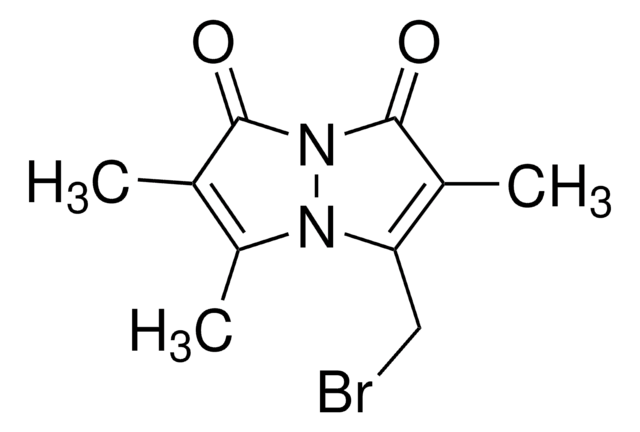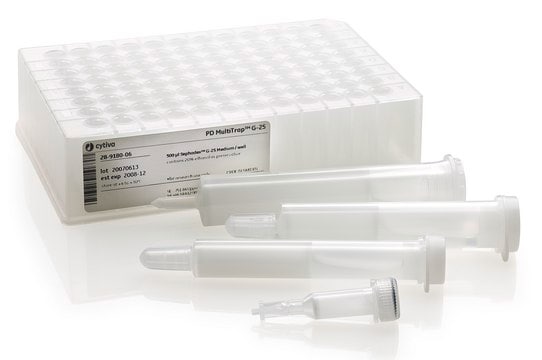38132
N-(5-Fluoresceinyl)maleimide
≥90% (HPLC), BioReagent, suitable for fluorescence
Sinónimos:
5-Maleimido-fluorescein
About This Item
Productos recomendados
Línea del producto
BioReagent
Nivel de calidad
Análisis
≥90% (HPLC)
fluorescencia
λex 490 nm; λem 518 nm in 0.1 M Tris pH 8.0
idoneidad
corresponds for coupling to thiols
suitable for fluorescence
temp. de almacenamiento
2-8°C
cadena SMILES
Oc1ccc2c(Oc3cc(O)ccc3C24OC(=O)c5cc(ccc45)N6C(=O)C=CC6=O)c1
InChI
1S/C24H13NO7/c26-13-2-5-17-19(10-13)31-20-11-14(27)3-6-18(20)24(17)16-4-1-12(9-15(16)23(30)32-24)25-21(28)7-8-22(25)29/h1-11,26-27H
Clave InChI
AYDAHOIUHVUJHQ-UHFFFAOYSA-N
¿Está buscando productos similares? Visita Guía de comparación de productos
Categorías relacionadas
Descripción general
Aplicación
N-(5-Fluoresceinyl) maleimide (5-FM) is used to fluorescence label molecules such as proteins and peptides via their thiol groups.
Envase
¿No encuentra el producto adecuado?
Pruebe nuestro Herramienta de selección de productos.
Palabra de señalización
Warning
Frases de peligro
Clasificaciones de peligro
Acute Tox. 4 Oral
Código de clase de almacenamiento
11 - Combustible Solids
Clase de riesgo para el agua (WGK)
WGK 3
Punto de inflamabilidad (°F)
Not applicable
Punto de inflamabilidad (°C)
Not applicable
Equipo de protección personal
dust mask type N95 (US), Eyeshields, Gloves
Certificados de análisis (COA)
Busque Certificados de análisis (COA) introduciendo el número de lote del producto. Los números de lote se encuentran en la etiqueta del producto después de las palabras «Lot» o «Batch»
¿Ya tiene este producto?
Encuentre la documentación para los productos que ha comprado recientemente en la Biblioteca de documentos.
Nuestro equipo de científicos tiene experiencia en todas las áreas de investigación: Ciencias de la vida, Ciencia de los materiales, Síntesis química, Cromatografía, Analítica y muchas otras.
Póngase en contacto con el Servicio técnico